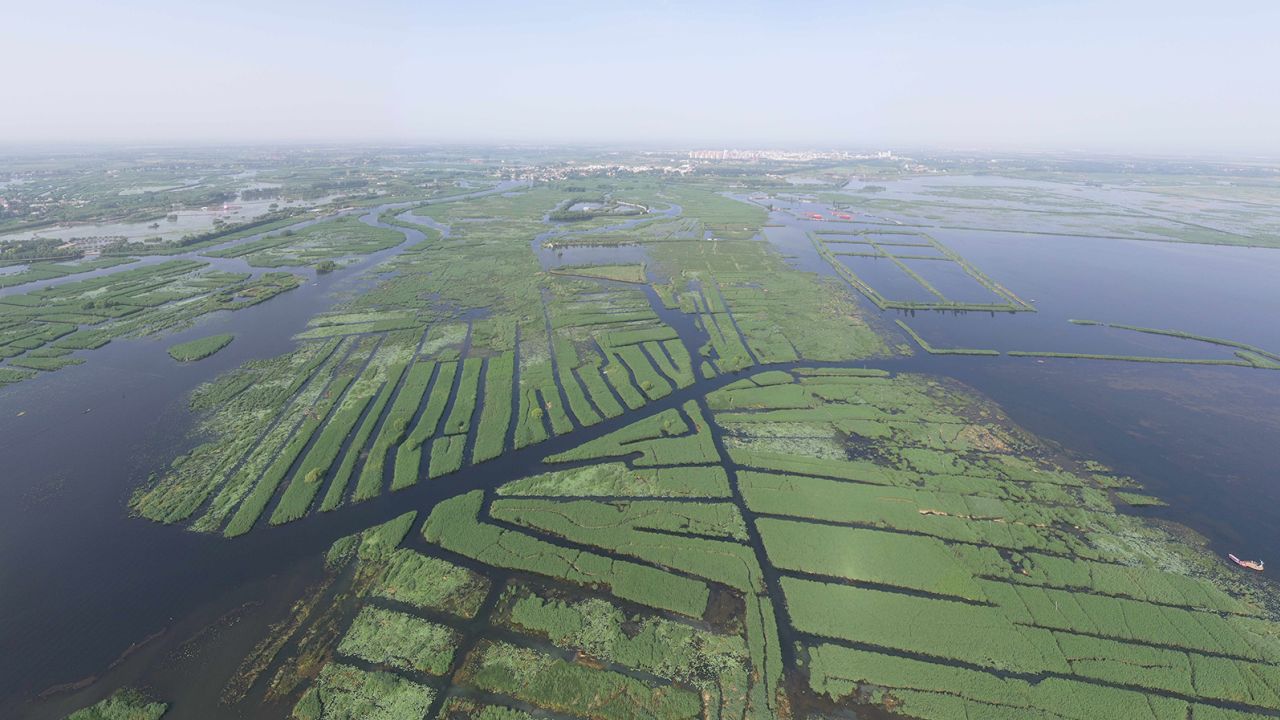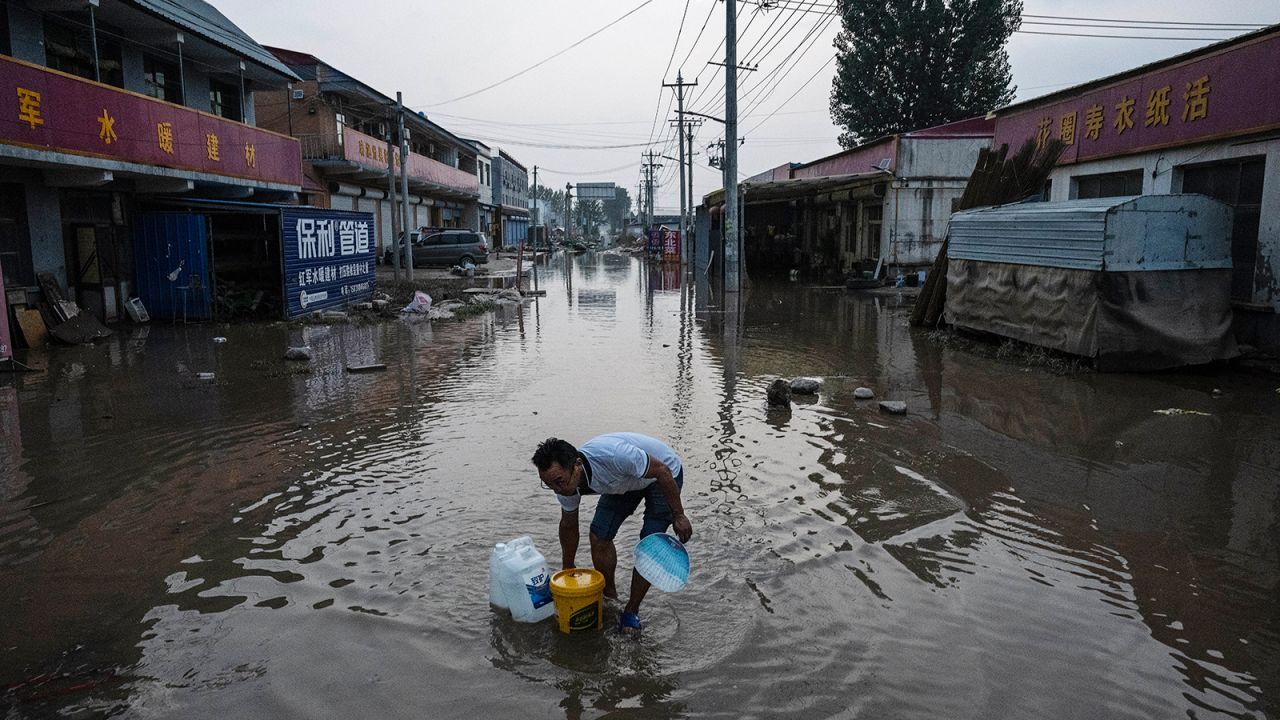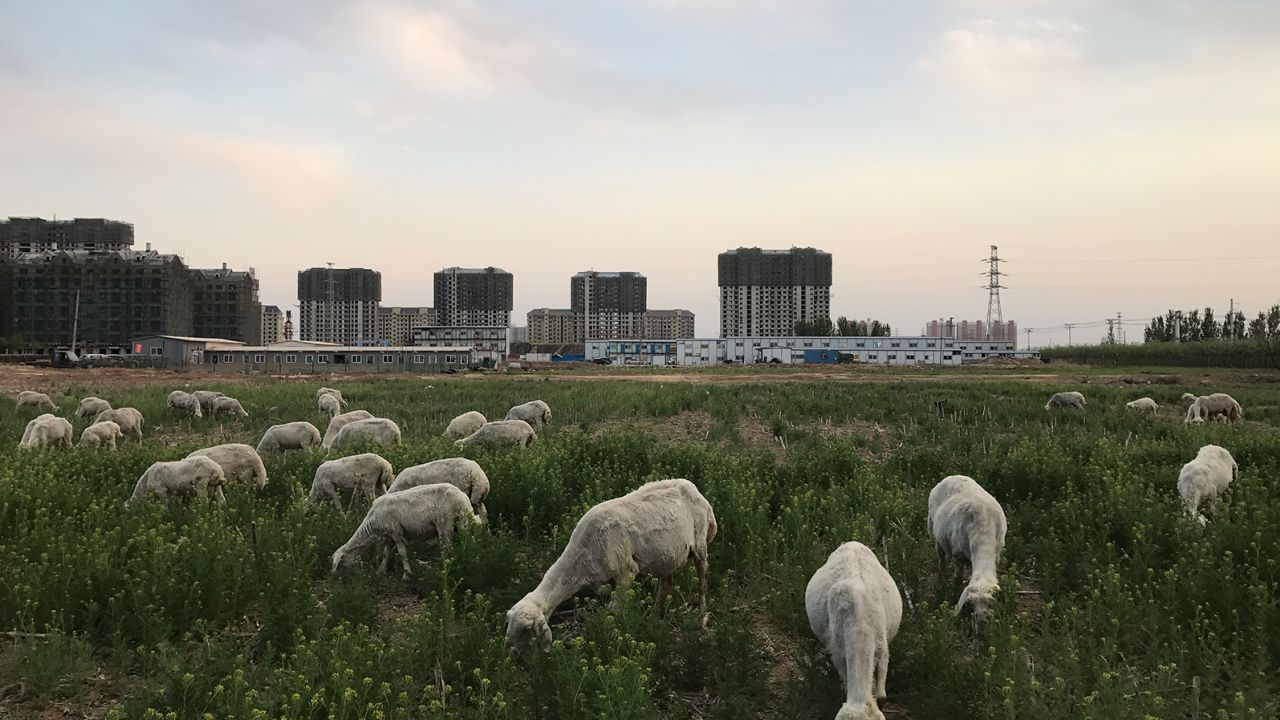Bloomberg News
Thu, August 17, 2023

(Bloomberg) -- Only a week ago, Zhongzhi Enterprise Group Co. attracted little notice within China and was almost unheard of everywhere else.
Now, the secretive shadow banking giant has become the latest symbol of financial fragility in an $18 trillion economy where confidence among investors, businesses and consumers is rapidly dwindling.
The privately owned manager of more than 1 trillion yuan ($137 billion) and its trust-company affiliates are under intense scrutiny after halting payments to thousands of customers. Underlining its importance, regulators have formed a task force as they seek to prevent contagion. Behind the scenes the firm has hired KPMG to carry out what is likely to be a protracted restructuring process. Potential asset sales threaten to weigh on broader markets.
Zhongzhi’s troubles have also sparked protests, prompting the police around the country to order disgruntled clients not to go public in their desperation to recoup losses. Chinese assets have tumbled as word of Zhongzhi’s difficulties spread, helping pushing the yuan close to a 16-year low. A central bank rate cut this week has done little to bolster confidence as concerns mount about more failures in the nation’s $2.9 trillion trust sector.
The turmoil represents yet another challenge for Xi Jinping’s government, which is already grappling with a weak economy, a property selloff and growing geopolitical tensions with the US. It’s also a reminder of the potential for unwelcome surprises in an opaque Chinese financial system that has long been dogged by concerns about unsustainable debt.
“This is a problem that’s only going to intensify” with more funds missing payments, Kathy Lien, managing director of BK Asset Management, said in an interview Thursday on BNN Bloomberg Television. “There is only so much they can do,” she said, referring to Chinese authorities, calling this a “crisis of confidence.”
For Zhongzhi, the pieces unraveled quickly. The first public sign of trouble came with three stock exchange filings by corporate clients in Shanghai late last Friday. The filings sounded the alarm about missed payments on high-yield investment products offered by the firm and Zhongrong International Trust, a trust firm closely linked to Zhongzhi.
Zhongrong is a top-10 trust, pooling deposits from largely wealthy individual investors and companies to make investments in stocks, bonds and others assets, while lending to firms that can’t access traditional banks. Though they operate in the shadows, the trusts account for almost 10% of total loans in China, according to Bloomberg Economics.
Zhongrong has 270 products totaling 39.5 billion yuan due this year, according to data provider Use Trust.
To lure cash, trusts like Zhongrong offer rates as high as 6% or 8% for a one-year term, about double what commercial banks pay on similar products. With stocks in China tumbling and real estate in a two-year decline, these seemingly can’t-miss funds with quarterly payouts have attracted trillions of yuan.
The pitch worked for Joey, a client in northern China who invested about 2 million yuan — more than a quarter million dollars — into four Zhongrong products earning 4% to 6%. Several neighbors invested as well. She now wonders whether she will get any money back after payments stopped in June. Visits to the local regulator and police have been fruitless.
“We are very desperate,” Joey said, declining to give her full name because of privacy concerns. “We may have no choice but take to the streets sooner or later.”
Zhongzhi was founded as a lumber business in 1995 by Xie Zhikun, who before he passed away in 2021 made a fortune in printing before expanding into distressed assets including real estate.
Before Zhongzhi’s troubles emerged into the opening, it was already acting behind the scenes. In late July it hired KPMG to review its balance sheet amid a worsening liquidity crunch, people familiar said earlier, asking not to be identified as the matter is private. The Beijing-based company plans to restructure debt and sell assets after the review in order to repay investors, the people said.
It’s unclear how many products Zhongzhi has defaulted on and whether the company has sufficient assets to cover the shortfall if liquidated.
In recent years, even as rival trusts pared risks, Zhongzhi and its affiliates, especially Zhongrong, extended financing to troubled developers and snapped up assets from companies including China Evergrande Group.
The real estate investments soured after a crackdown on property lending and a slump in sales during the pandemic led to a flurry of defaults. Even developers like Country Garden Holdings Co. that survived the first wave of failures are under pressure as the slowdown continues. China’s home sales tumbled the most in a year last month, and Country Garden is on the verge of default after it missed coupon payments.
The property woes created a cash crunch for trusts like Zhongrong, which count on investments and loans to pay depositors. An estimated 10% of all trust assets — some $300 billion — are tied to the property sector, according to Bloomberg Economics.
Trouble in the trust sector is nothing new, but the size of Zhongzhi has ratcheted up concerns. About 106 trust products worth 44 billion yuan defaulted this year through July 31, according to Use Trust. Real estate investments accounted for 74% of the defaults by value. Last year also saw billions of dollars in defaults.
“The defaults could continue to hurt investor and market sentiment,” Fitch CreditSights analysts Zerlina Zeng and Karen Wu said in a note. “Disorderly winding-up of any large trust or wealth management company could test near-term financial stability.”
As payment delays mounted this week, so did the protests.
About two dozen people rallied outside the firm’s Beijing offices, in a rare show of public outrage in the capital. In one of the video clips posted on Wechat seen by Bloomberg News, a woman is heard shouting: “Give us the money back, or we will die here.”
In an effort to quell the social unrest, China police responded swiftly, setting up metal gates around the office. They also visited the homes of several protesters, urging them to avoid public demonstrations, according to investors who asked not to be identified. The police visits spanned a massive area, including the southwestern province of Sichuan, and the coastal areas of Jiangsu and Shandong.
The failures have drawn attention from Beijing. The National Financial Regulatory Administration, China’s top banking regulator, established a working group to examine the risks at the financial holding company, according to people familiar. The regulator required Zhongrong to report its plans for future payments and assets that can be sold to deal with the liquidity crunch, said the people.
While it’s unlikely Zhongzhi’s woes will impact the big commercial banks, it could spread to other asset managers if wealthy investors start pulling their money, said Dinny McMahon, an analyst for Trivium China and author of China’s Great Wall of Debt.
“When investors start to lose faith, then all of a sudden an outfit’s ability to continue to raise new funds becomes more difficult,” McMahon said. “Then the potential for defaults to cascade becomes more and more.”
--With assistance from Zhang Dingmin.
Bloomberg News
Wed, August 16, 2023



(Bloomberg) -- Chinese investors protested outside the office of one of the country’s biggest shadow banks, in a rare show of public outrage after the firm skipped payments on dozens of investment products.
Videos of the incident appear to show about two dozen protesters at Zhongrong International Trust Co., demanding payment on high-yield products that were pitched as safe investments. In one of the clips posted on Wechat seen by Bloomberg News, a woman angrily asks: “Why doesn’t the company pay us back?” she says. “It has already matured. Your financial statements said there is a profit.”
The protests indicate troubles at the embattled Chinese shadow bank are deeper than previously known, and underscore how the fallout from the real estate slump is spreading to the financial sector. Many trust products sold by Zhongrong and others are backed by housing projects run by troubled developers such as China Evergrande Group.
Pressure is building across China’s financial markets given a slew of disappointing economic data, renewed concerns about the property sector and the unfolding crisis in the shadow banking system. Investors are calling for more aggressive easing by Beijing as the incremental policies have so far failed to revive confidence. A selloff in Chinese assets deepened on Wednesday, with the MSCI China Index down as much as 1.3%.
Read more: Country Garden Warns on ‘Major Uncertainties’ in Bond Payments
Zhongrong is among the biggest firms in the country’s $2.9 trillion trust industry, which pools savings from wealthy households and corporate clients to make loans and invest in real estate, stocks, bonds and commodities. The firm has 270 high-yield products totaling 39.5 billion yuan ($5.4 billion) due this year, according to data provider Use Trust.
Chinese authorities have already set up a task force to study any possible contagion from the shadow banking group, which manages about $138 billion. The firm said it has no immediate plans to make clients whole.
“Given the recent net asset value markdowns and redemptions, we expect growth in trust products to slow, which could result in tighter property financing conditions, and affect banks’ earnings and balance sheets,” Goldman Sachs Group Inc. analyst Shuo Yang wrote in a note.
Wang Qiang, board secretary of the firm partly owned by financial giant Zhongzhi Enterprise Group Co., told investors in a meeting earlier this week that the firm missed payments on a batch of products on Aug. 8, adding to delays on at least 10 others since late July, according to people familiar with the matter. At least 30 products are now overdue and Zhongrong also halted redemptions on some short-term instruments, one of the people said.
Cash Crunch
Wang said liquidity at the firm has suddenly dried up. The company is facing a “tsunami” of questions from investors and their own wealth managers, according to people familiar, who asked not to be identified because the meeting was private. Wang asked for patience as the firm seeks to recoup the value of its investments.
Zhongzhi is among the private wealth managers that Beijing has been trying to rein in for years to minimize risks for the hundreds of thousands of retail clients who buy these products assuming they’re safe. China is already struggling with a weak economy and fallout from the property slump that’s threatening to push giants like Country Garden Holdings Co. into default. The central bank on Tuesday cut interest rates by the most in three years in a bid to revive growth.
According to Bloomberg Economics, the trust sector’s exposure to real estate is about 2.2 trillion yuan, or 10% of total assets as of the end of 2022. Zhongrong is the ninth-biggest trust, with about 600 billion yuan in assets.
“The big danger is that a negative feedback loop kicks in, with property stress causing strains in the financial system, undermining credit expansion and depressing growth, which, in turn, exacerbates the slump in the property sector,” Bloomberg Economics said in a note.
Zhongrong investors are now losing patience. Many bought the products paying as much as 7% annual interest, betting they would be a safe bet as Chinese stocks and real estate prices tumble.
The protesters in Beijing were met by about 10 police and security officers, while a company official tried to keep the peace.
One woman is heard shouting: “Give us the money back, or we will die here.” Another says: “Why you don’t give us a clear explanation?”
Read more: China Shadow Bank Misses Dozens of Payments as Risks Grow
A reporter who visited the Zhongrong office Wednesday afternoon didn’t see any protesters but there was an unusually heavy police presence around the building. Officers were seen sitting in several police vans and cars parked inside and outside the office compound, and other police vehicles were placed on roads nearby.
Officers were also watching the area from inside one of the several city buses that were parked at the main gate or nearby. Workers were erecting extra fencing around the building.
Police in Beijing didn’t immediately respond to a request for comment.
Protests over financial disputes are fairly common in China but the authorities are unlikely to tolerate them for long, especially in the capital where authorities prize stability.
Police quickly broke up demonstrations in Beijing and other cities late last year over the government’s harsh Covid Zero rules. Officers maintained a presence for days at the site of the unrest to deter any repeat.
Shortly afterward, China started dismantling Covid Zero yet still arrested several people on a catch-all charge called “picking quarrels and provoking trouble.” A conviction on that charge can mean up to five years in prison. It is unclear how their cases were resolved.
A series of demonstrations also erupted in 2022 in the central province of Henan over a suspected financial scam. Police and protesters clashed as hundreds of people demanded the return of deposits worth up to tens of billions of yuan.
Jason Xue and Clare Jim
Wed, August 16, 2023


By Jason Xue and Clare Jim
SHANGHAI/HONG KONG (Reuters) -A major Chinese asset manager has told its investors it needs to restructure its debt, stoking fears that a chain of defaults could spread through the financial sector and deliver a destabilising shock to the country's weakened economy.
Zhongzhi Enterprise Group, which raises money from companies and the wider public and is reported to manage 1 trillion yuan ($137 billion) in assets, spoke of the restructuring in an investor meeting on Wednesday, a video seen by Reuters showed.
The Beijing-based firm, which has sizeable exposure to the country's cash-squeezed real estate sector, has already stopped payment to investors in all investment products.
Zhongzhi operates in China's $3 trillion shadow finance sector, selling high-yielding investment products via its trust and wealth management units, and has strong links with banks and other financial institutions.
Anxious retail investors are bombarding listed companies with questions about their exposure to Zhongrong, a subsidiary of Zhongzhi, after missed payments by the trust company triggered fears of wider contagion.
Citigroup said in a note that it expected more trust-fund defaults due to their exposure to the property sector downturn in China, but this was unlikely to lead to a "Lehman moment".
"As the problems in the property development sector are not new and have already been unfolding for several years, we think investors would have already psychologically prepared for the potential of defaults."
Zhongzhi's financial trouble is the latest challenge forChinese authorities as they battle to contain a worseningproperty sector crisis and revive a faltering recovery in the world's second-largest economy.
Morgan Stanley has become the latest among some of the major brokerages to cut China's growth forecast for this year. It now sees China's gross domestic product (GDP) growing 4.7% this year, down from an earlier forecast of 5%.
Zhongzhi has hired one of the Big Four accounting firms toconduct a comprehensive audit of the company, and is seekingstrategic investors, its management told investors inWednesday's meeting. The plan is for "self-rescue" through restructuring, with afocus on debt collection and asset liquidation, but bankruptcyis also an option, they added, without disclosing the amount ofdebt that needed to be restructured. It was not possible to determine whether the company isinsolvent before the completion of auditing work, which began inJuly, the executives told its investors, according to the videoseen by Reuters. Zhongzhi did not immediately respond to a request for comment. The Wednesday's meeting was held after Zhongrong International Trust Co, a leading trust company controlled by Zhongzhi, missed payments on dozens of investment products since the end of July, Reuters reported on Wednesday, citing sources.
PROPERTY CRISIS The liquidity stress facing Zhongzhi highlights the rippleeffect of an unprecedented debt crisis in China's propertysector, which accounts for roughly a quarter of the economy that has rapidly lost momentum in recent months.
-
The central bank said on Thursday it would keep liquidity reasonably ample and keep its policy "precise and forceful" to support the country's economic recovery, amid rising headwinds.
Zhongzhi runs a shadow banking empire, holding stakes in five asset management companies, four wealth management firms, and Zhongrong International Trust, a major trust company thatmanages more than 700 billion yuan ($95.69 billion) of assets.
The group has been selling stakes in some listed companiesit controlled over the past few years, and reducing the size ofit business, which came under increased pressure after China'scrackdown on shadow banking, and the property market downturn.
China's property market has lurched from one crisis toanother in the last couple of years with a string of leadingdevelopers including China Evergrande Group and SunacChina defaulting on their debt repayment obligations.
Country Garden, the country's largest privatedeveloper, has become the latest to flag a stifling liquiditycrunch at a time when property investment, home sales and new construction have contracted for more than a year.
Evergrande said late on Wednesday it would delay the votingdate and scheme meetings with creditors for its offshore debtrestructuring plan to Aug 23 and Aug 28, respectively, to givecreditors more time to consider the terms. The delay comes after the deal this week to sell a 27.5%stake in its unit China Evergrande New Energy Vehicle Group, and swap part of the debt in the NEV unit owed to theparent company and current controlling shareholder into shares. Evergrande is the first defaulted developer to hold schememeetings and its years-long restructuring practice highlights the challenges facing its peers to put their operations to back on track. ($1 = 7.3155 Chinese yuan renminbi)
(Reporting by Jason Xue in Shanghai, Clare Jim in Hong Kong; additional reporting by Shanghai newsroom; Writing by Sumeet Chatterjee; Editing by Jacqueline Wong, Jamie Freed and Shri Navaratnam)
China Evergrande's Shenzhen-listed unit probed by securities regulator for alleged breach of information disclosure rules
South China Morning Post
Thu, August 17, 2023
Hengda Real Estate Group is being investigated by China's securities regulator for allegedly violating information disclosure rules, in the latest blow for its embattled parent, China Evergrande Group.
The developer said in a filing to the Shanghai Stock Exchange on Wednesday evening that the China Securities Regulatory Commission (CSRC) had sent a letter notifying it of the probe earlier the same day.
"The company is actively assisting the regulator in conducting the probe," Hengda said in the filing.
Do you have questions about the biggest topics and trends from around the world? Get the answers with SCMP Knowledge, our new platform of curated content with explainers, FAQs, analyses and infographics brought to you by our award-winning team.
It comes just a few months after the home builder was reprimanded by the two major mainland bourses for missing a deadline for publishing its annual results.
Hengda is an indirectly owned unit of Guangzhou-based Evergrande Group, the world's most indebted developer saddled with total liabilities of 2.44 trillion yuan (US$335.3 billion).
"Evergrande and its onshore unit found themselves in hot water after a 2021 default which triggered a chain of bad reactions," said Zhou Ling, a fund manager with Shanghai Shiva Investment. "The investigation could further hurt investors and creditors' confidence in the developer."
Of the 73 mainland-listed firms that had been probed by the CSRC as of July 18, 54 of them were suspected of irregularities related to divulging information, according to the state-owned Economic Information Daily newspaper.
State-owned juggernauts like China Shipbuilding Industry and Beijing Capital Development were also targeted by the watchdog for breaching information disclosure rules.
In April, both the Shanghai and Shenzhen stock exchanges chastised Hengda Real Estate and two of its top executives - chairman Zhao Changlong and chief financial officer Qian Cheng - for breaching listing requirements.
They said the real estate company failed to publish its 2021 annual report by the April 30 deadline last year.
The Shenzhen-listed company said it would accept any disciplinary action imposed on it or the two bosses, though none was taken in the end.
Three of Hengda Real Estate's bonds are listed on both the Shanghai and Shenzhen exchanges.
On July 17, Evergrande Group, whose Hong Kong-listed shares have been suspended from trading since March last year, said it posted a net loss attributable to shareholders of 476 billion yuan for 2021, and of 105.9 billion yuan for 2022, according to exchange filings.
The group's total liabilities stood at 2.44 trillion yuan at the end of last year. The company's borrowings rose to 612.39 billion yuan from 607.38 billion yuan in 2021, according to the filings.
Evergrande was the main victim of Beijing's clampdown on the red hot property market after the government introduced the "three red lines" policy to reduce developers' leverage.
Since late 2021 the Guangzhou-based developer has been struggling to complete projects and repay suppliers and creditors.
Creditors will vote on Evergrande Group's restructuring proposal for US$20 billion of offshore debt at meetings scheduled for August 23 and 24, after the company got the go-ahead from a Hong Kong court on July 24.
During the hearing, a lawyer for Evergrande told the court that under its proposal the developer is likely to have an asset recovery rate of about 22.5 per cent, significantly higher than the 3.4 per cent estimated in November, should it be liquidated, citing an updated analysis by Deloitte, the consultancy commissioned by the developer.
Copyright (c) 2023. South China Morning Post Publishers Ltd. All rights reserved.















